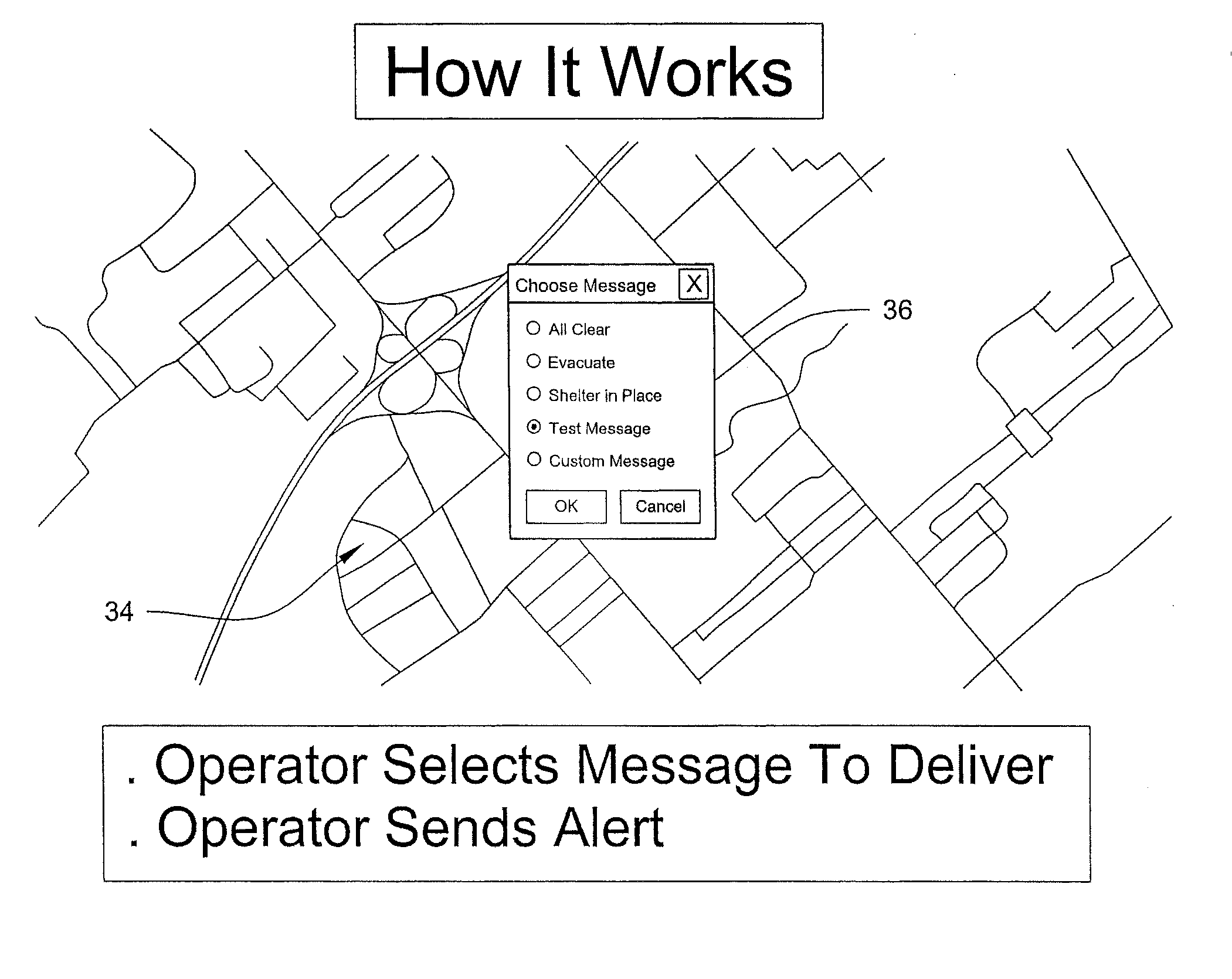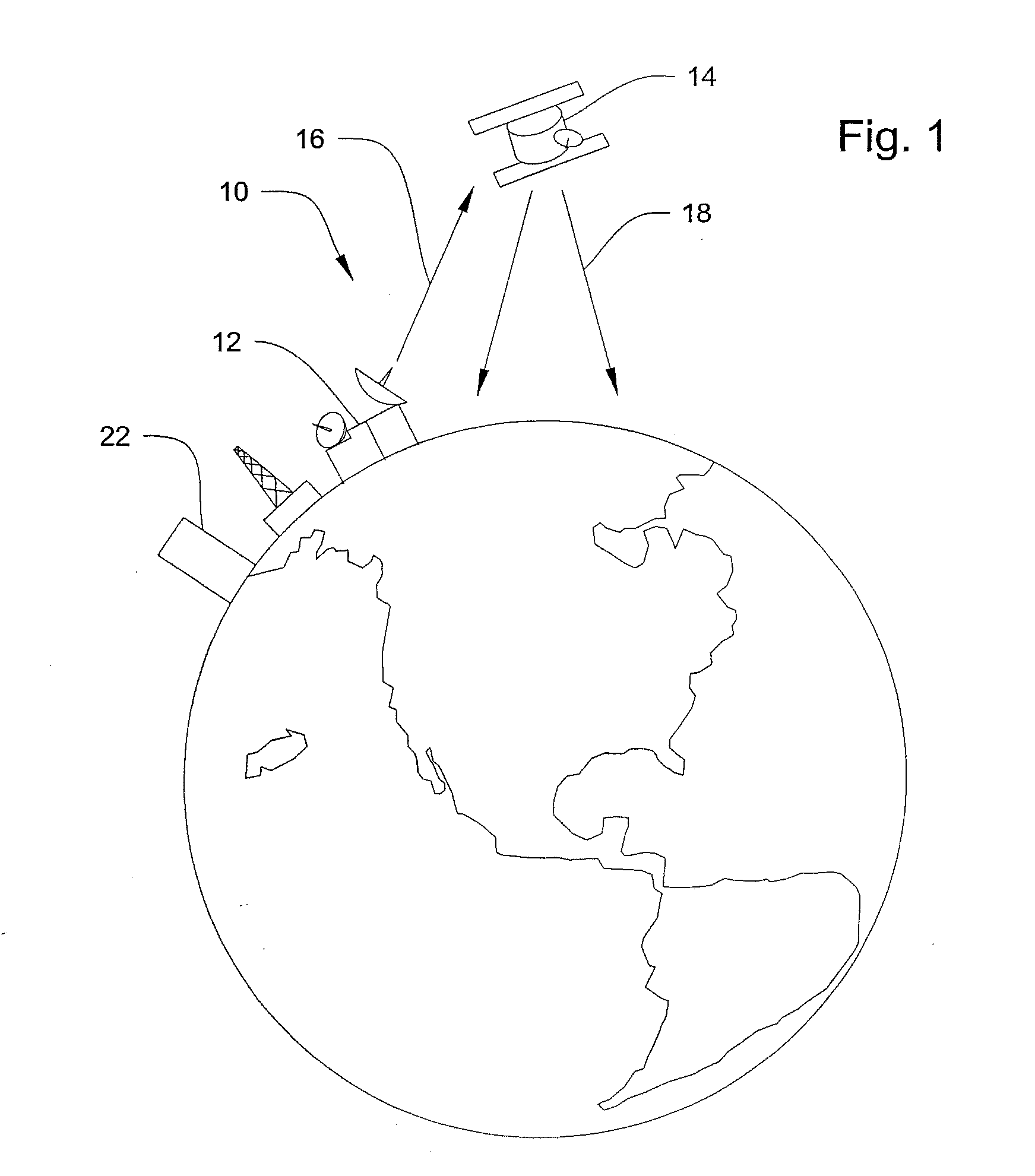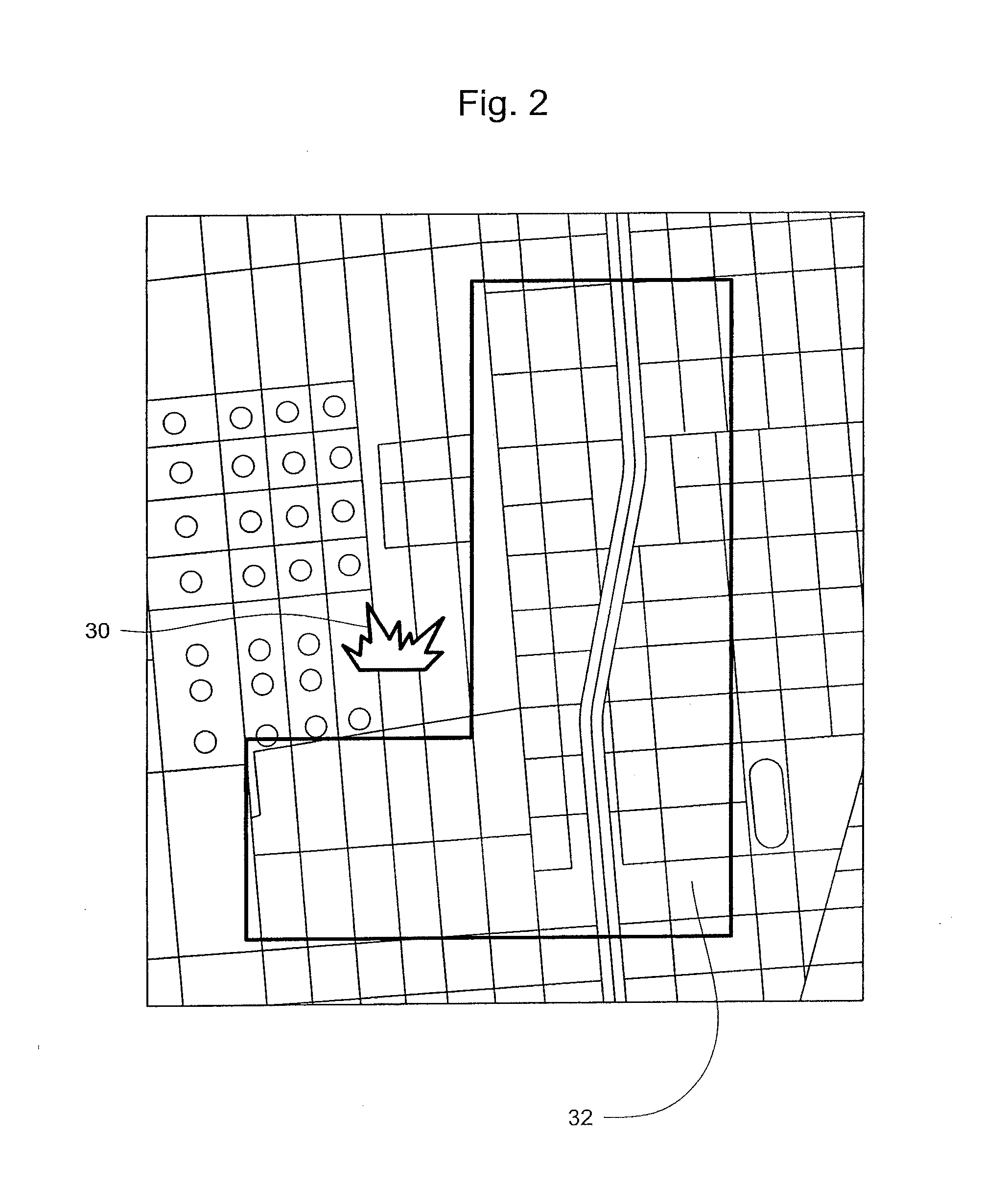Emergency Alert System and Method
- Summary
- Abstract
- Description
- Claims
- Application Information
AI Technical Summary
Benefits of technology
Problems solved by technology
Method used
Image
Examples
Embodiment Construction
[0030]Key elements of an EAS 10 are shown generally in FIG. 1. An emergency alert transmission center 12 receives an emergency alert message and geographic data from an emergency operations center (EOC) 22, and transmits one or more signals 16 to an emergency system satellite 14. The signals 16 correspond to a geographic area message, which is based on a geographic area of concern, and an emergency alert message, which is intended for persons located within the geographic area of concern. The EOC 22 and the emergency alert transmission center 12 could be a single facility or could be separate facilities. In a preferred embodiment, the emergency alert transmission center 12 is a separate facility and serves a number of EOCs 22 from different geographic areas. For example, a single emergency alert transmission center 12 would be capable of serving EOCs 22 from numerous states, cities, or other areas. The emergency alert transmission center has one or more transmitters for sending the ...
PUM
 Login to View More
Login to View More Abstract
Description
Claims
Application Information
 Login to View More
Login to View More - R&D
- Intellectual Property
- Life Sciences
- Materials
- Tech Scout
- Unparalleled Data Quality
- Higher Quality Content
- 60% Fewer Hallucinations
Browse by: Latest US Patents, China's latest patents, Technical Efficacy Thesaurus, Application Domain, Technology Topic, Popular Technical Reports.
© 2025 PatSnap. All rights reserved.Legal|Privacy policy|Modern Slavery Act Transparency Statement|Sitemap|About US| Contact US: help@patsnap.com



